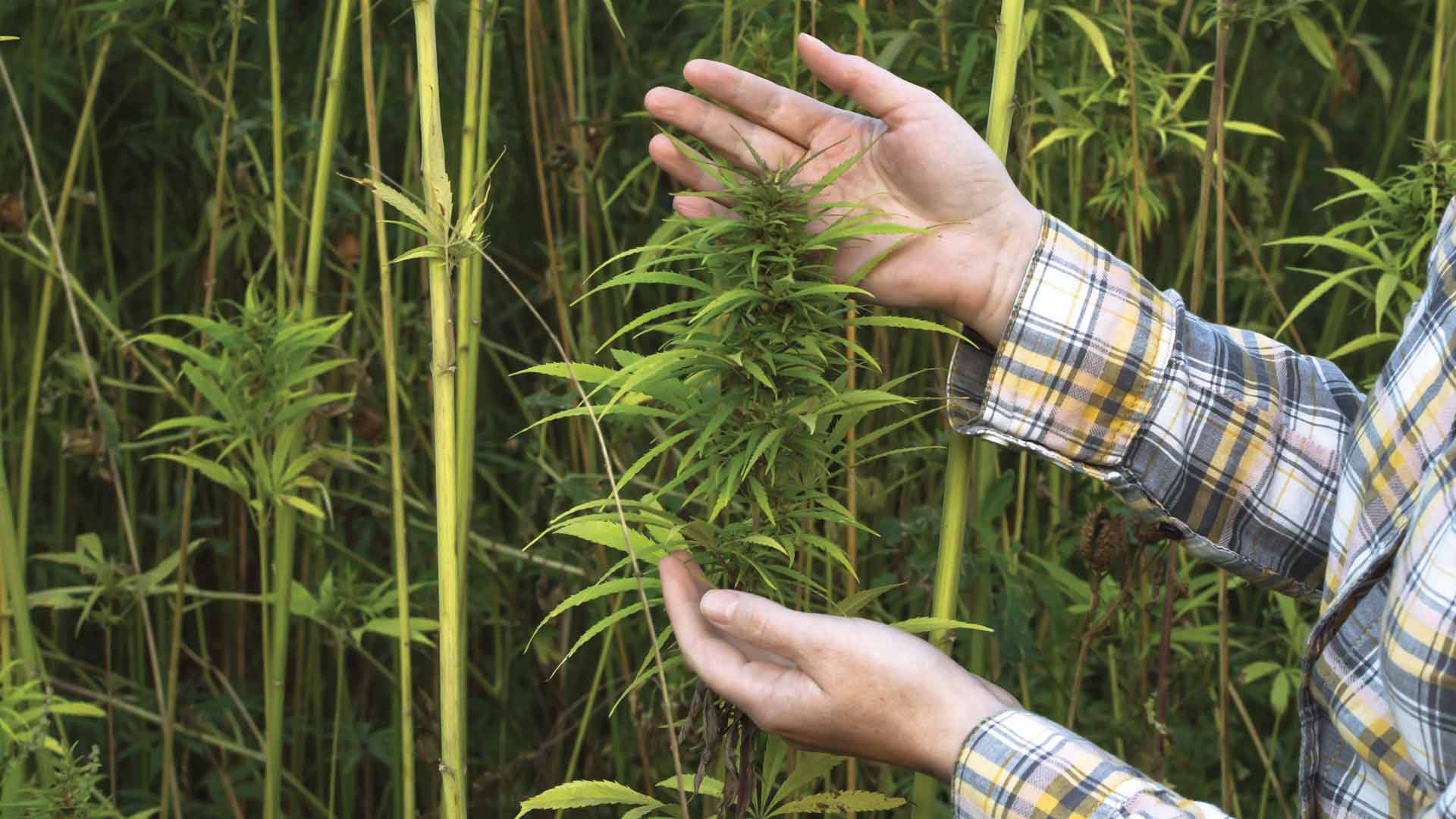By Dan Lemke
After an absence of more than half a century, industrial hemp is making a limited return to Minnesota farm fields.
In 2015, the Minnesota Industrial Hemp Development Act was passed allowing the Minnesota Department of Agriculture (MDA) to create an industrial hemp research pilot program to study the growth, cultivation, and marketing of industrial hemp. In 2016, there were six Minnesota pilot participants who grew industrial hemp. Approximately 40 acres of hemp was harvested, giving Minnesota its first hemp crop in 60 years. In 2017, there are nearly 2,000 acres under cultivation by about 40 growers.
Industrial hemp isn’t a new crop for Minnesota, but it hasn’t been legal to plant since the 1950s. According to the Minnesota Hemp Industries Association, during World War II the U.S. government formed the War Hemp Industries Department and subsidized hemp cultivation to replace imported “manila hemp” fiber. During the war, U.S. farmers grew about a million acres of hemp across the Midwest as part of that program.
After the war ended, industrial hemp production decreased and later stopped because hemp was no longer officially recognized as distinct from marijuana after the passage of the Controlled Substances Act of 1970.
A New Day
For years hemp proponents argued hemp production should be allowed because it produces a strong fiber, seeds with multiple potential uses and doesn’t contain the psychoactive ingredients of marijuana, despite being in the same plant family. That message has been widely received as 28 states, including Minnesota, now have hemp pilot projects. “The Minnesota Department of Agriculture (MDA) has now worked for two years to support producers who want to grow, process, and market industrial hemp. We’ve already seen great potential, and we hope to continue to expand the program by increasing acreage and bringing processors to Minnesota,” said MDA Assistant Commissionaer Andrea Vaubel.
Growing hemp is one thing, but developing viable commercial markets for hemp products is another challenge altogether. AURI is working with industry leaders including growers, economic developers, processors and regulators to identify the hurdles and opportunities hemp presents.
AURI Project Development Director Harold Stanislawski says there is interest in finding value added uses for the fiber and seeds. The fiber has potential uses as animal bedding or absorbents. Fibers could also be used to strengthen existing products including packaging materials. Meanwhile, hemp seeds are a potential source of protein for human use in snack bars, protein shakes and other products.
AURI is helping to clarify what uses have market potential and what commercialization roadblocks exist.
“There is a tremendous amount of innovation that could occur in the next 10 to 20 years,” Stanislawski says. “It’s a matter of finding the right mainstream and niche markets to make it a viable industry.”
One current roadblock is processing. Minnesota used to be home to numerous facilities that processed hemp into products like rope. That capacity faded when farmers could no longer plant hemp, leaving the state with a void.
“There is no hemp processing for end products in Minnesota,” says Alan Doering, AURI senior scientist for coproducts.
Doering and other AURI staff are researching hemp characteristics to identify the most readily accessible markets and value-added opportunities.
Stanislawski says the industry’s momentum is building thanks in large part to visionary and committed growers. They face unique challenges, however. Unlike mainstream crops like corn, soybeans or sugar beets, hemp is currently regulated by the government. Stanislawski is hopeful that a successful 2017 harvest will provide enough seed and fiber to give researchers and farmers the critical mass to rebuild a Minnesota hemp industry.
“If viable market opportunities are found and value-added processing is established, a Minnesota hemp industry will again become a reality, Stanislawski says.
